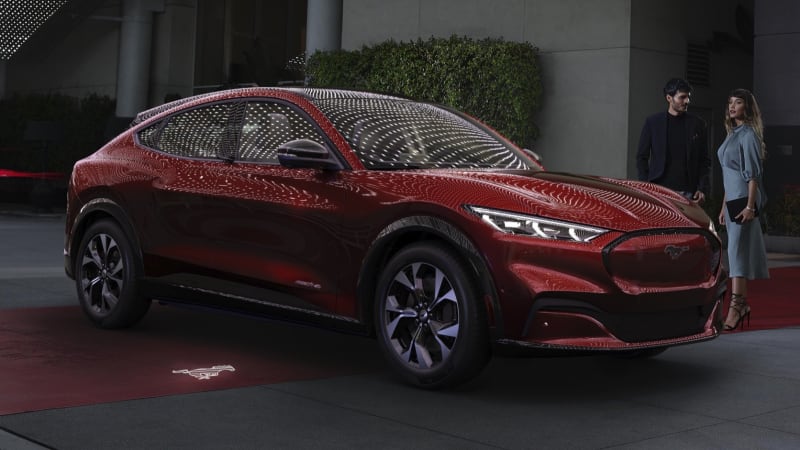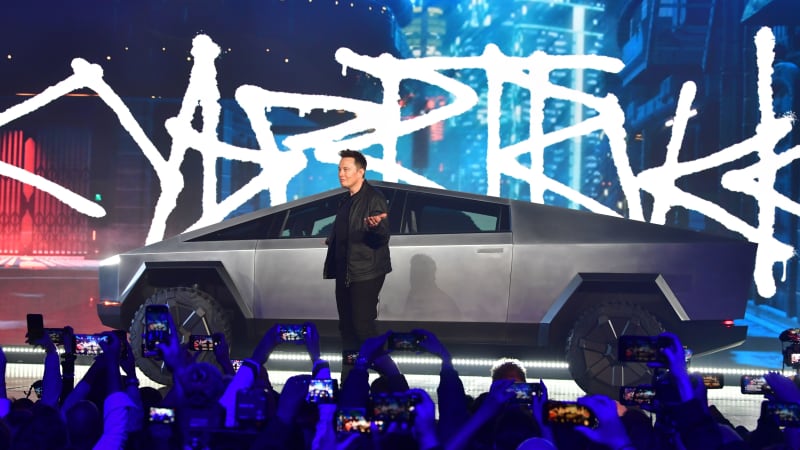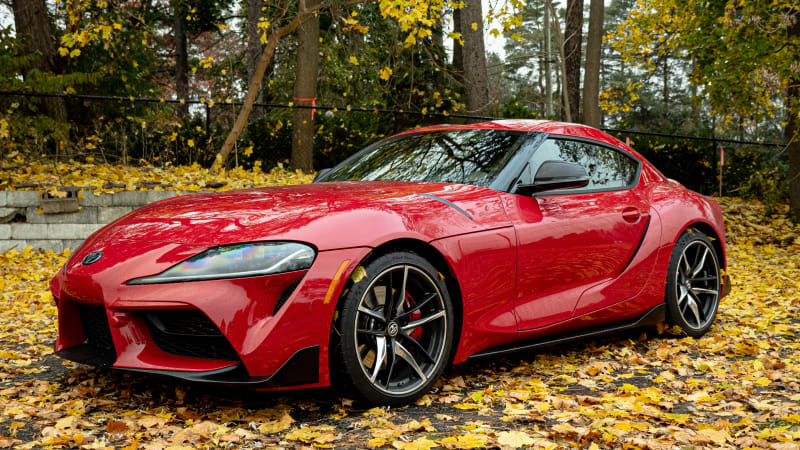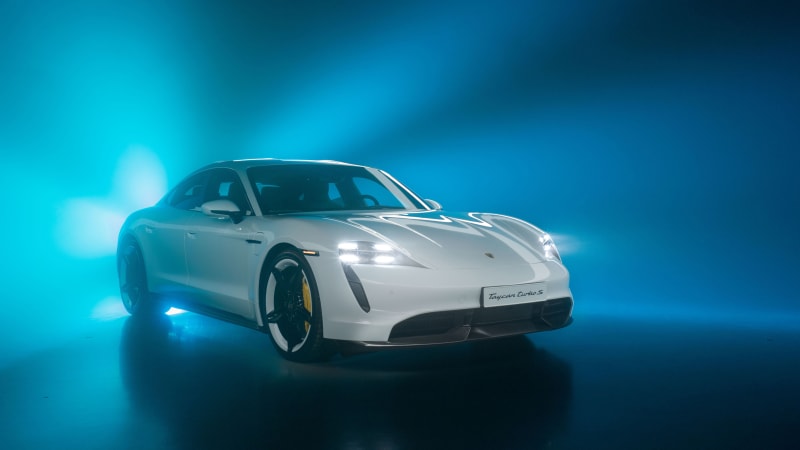Top 10 automotive stories of 2019
https://ift.tt/2ME8Wdz
When it comes to the auto industry, 2019 saved some of the biggest news and surprises for late, with a 40-day UAW strike bringing production to a halt at General Motors, an announcement of a merger partner for Fiat Chrysler, GM’s shock racketeering lawsuit against the same company and some very compelling new product reveals. Through it all, the industry looks set to buck early pessimism by finishing out a surprisingly strong year for sales.
What follows is our list of the top 10 auto stories of 2019. Did we miss anything? Tell us in the comments.
Ford’s newest Mustang is an electric crossover
Ford made a big splash to kick off the L.A. Auto Show by finally revealing its first dedicated battery-electric vehicle, calling it the Mustang Mach-E.
Using Mustang branding on the crossover, including the galloping horse up front where the grille would ordinarily be, didn’t sit well with some enthusiasts, who groused about cheapening the potent Mustang brand. Others defended the decision as a smart way to inject passion and excitement into a project that Ford acknowledged “looked like a science project” when it began. “I was absolutely adamant that it not be a Mustang,” Chairman and family scion Bill Ford Jr. acknowledged in the video explaining the Mach-E’s origins. But few would argue about the Mach-E’s sporting fastback looks, its Tesla-like interior or its specs, which top out at 459 horsepower and 612 pound-feet of torque, or a projected 300 or so miles of range, depending on its configuration. It was enough to earn it Autoblog’s top pick from L.A.
World, meet Cybertruck
On the other side of the L.A. Auto Show, Elon Musk’s unveiling of the long-awaited Tesla Cybertruck created comparable buzz to the Mustang Mach-E, even if it left some people scratching their heads and others simply shaking theirs. It’s probably an understatement to call the Cybertruck’s angular and hard-edged styling divisive, having drawn comparisons to DeLorean on the positive end of the spectrum and the Pontiac Aztek on the other. “A freaking triangle!” one Autoblog commenter remarked.
Beyond its polarizing aesthetics, the Cybertruck boasts muscular specs, with a claimed top range of 500 miles, maximum towing capacity of 14,000 pounds and a 0-60 mph time of 2.9 seconds. It features one to three electric motors among its three different powertrain options, an adaptive air suspension with adaptive ride height, a bulletproof (!) stainless steel body and unbreakable windows that broke during a reveal stunt. Oh, well. Like the Model 3, there are questions about how Tesla will make good on its promised $39,900 starting price, what the final production version will look like and the downfalls of using stainless steel body panels. Musk said Tesla received 250,000 reservations for the truck within five days.
Supra reborn
Another vehicle that deeply divided opinion, the 2020 Toyota Supra is a controversial resurrection of the beloved and storied sports car nameplate, after two decades in hibernation, via a partnership with BMW. Featuring a short deck and long hood, the rear-drive two-seater owes much of its parts, engineering and 3.0-liter inline-six to the Z4 convertible and made some sacrifices from the larger FT-1 concept that presaged its arrival. Love it or hate it, everyone had an opinion about the so-called “German Supra”: It doesn’t come in manual; its styling is too busy; it’s too expensive at $50,920. But it looks almost nothing like the Z4 and drives differently, too. And aside from infusing some badly needed excitement into a weirdly dreary January auto show in Detroit, no one could stop talking about it.
Corvette C8 arrives at last
Following decades of concepts, leaks, renderings and plenty of camouflaged mules, Chevy finally made good on its promise to reimagine the Corvette as, for the first time ever, a mid-engine sports car. Bearing an all-new LT2 V8 making 490 horsepower and visible through a glass pane, it sends more power to the rear wheels and redistributes weight, a dry-sump oil system and dual-clutch transmission. Chevy touts the new ‘Vette as a major engineering coup, with just a single part as carryover from the seventh generation. The new ‘Vette also gets a new, stiffer frame for improved ride and handling, plus a number of tweaks to improve downforce and aerodynamics. The interior also gets a bunch of new technology and features like performance meters, an all-digital instrument cluster and a choice of six different interior and even seatbelt colors. The choice to go mid-engine means the advent of a Corvette frunk, booyah.
The nice surprise is the starting price just under $60,000. Alas, the UAW strike will make those hoping to buy one wait a little longer, with the production launch now pushed back to February.
The first wave of dedicated EVs
Electric vehicles have been one of the auto industry’s hot topics for years now, but 2019 felt like the year when the industry finally began putting its money where its mouth is. Rather than offering battery-electric versions of existing models, a la the Ford Focus Electric, several mainstream automakers this year served up their first versions of dedicated EV nameplates, if not their first EVs, period.
Interestingly, few followed the template of electrifying sensible small cars to appeal to conscientious tree huggers. Performance crossovers were all the rage. Porsche unleashed the Taycan, Jaguar gave us the I-Pace, Audi unveiled the E-Tron and Mercedes-Benz debuted the EQC, not to mention the Ford Mustang Mach-E and Mazda MX-30, which aren’t yet on sale. Of course, if you like small eco-cars, there’s the adorable (and Europe-only) Honda E, or the Volkswagen ID.3 hatchback. We’ll see whether marrying electrification to performance and luxury swagger can help EVs find more mass acceptance.
UAW on the hot seat
It was a year of many, many headlines for the United Auto Workers union, and not all of them positive for the rank and file, nor certainly for its leadership. Sure, members won better pay and bonuses, safeguards for temporary workers, new product commitments and other worker-friendly concessions from its 40-day strike against General Motors (though it was unable to prevent the closure of three GM plants in the U.S.). And that contract paved the way for relatively smooth negotiations and union-friendly contracts with both Ford and Fiat Chrysler.
But those hard-fought new contracts were hammered out under a cloud. A federal investigation has uncovered widespread corruption in the UAW’s leadership ranks in the form of embezzled member funds, kickbacks and illegal payouts that has so far resulted in 11 guilty pleas. UAW President Gary Jones, who has been implicated but as of this writing not charged in the investigation, went on leave in November. The union has named a new reform-minded president, Rory Gamble, and made a number of changes to strengthen financial controls, but prosecutors say they’re still not fully cooperating and that federal oversight or outright takeover is still possible. Whatever happens, it’s not a good look for an organization that is fighting to stay relevant after decades of mostly declining membership.
GM sues FCA over UAW bribes
Lawsuits between automakers are one thing, but this? This was something else altogether. General Motors’ racketeering lawsuit against crosstown rival Fiat Chrysler landed like an earthquake in Detroit and adds a bizarre new chapter to an awkward recent history between the two companies.
GM’s suit essentially builds off the widening federal investigation into corruption at the United Auto Workers union and says that senior FCA executives, including late former CEO Sergio Marchionne, paid $1.5 million in bribes to UAW officials over several years to distort three different four-year labor contracts and gain competitive advantages over GM. Those advantages, GM argues, saddled the company with higher labor costs, something the Center for Automotive Research had already determined was true of both GM and Ford relative to FCA, and were a way to force it to accept Marchionne’s advances to merge.
For its part, FCA rejects the complaint and vows to fight it in court. Federal prosecutors have already won convictions against three former Fiat Chrysler officials, so who knows whether more shoes could drop. The lawsuit also landed as Fiat Chrysler was simultaneously pursuing a merger with PSA Groupe of France and negotiating with the UAW for a new four-year contract. Experts say GM will have an exceedingly difficult time proving a racketeering lawsuit.
Fiat Chrysler finally finds a partner
The late Sergio Marchionne spent much of his time at the helm of Fiat Chrysler pursuing a merger partner, which he saw as necessary in an auto industry facing expensive investments in electric and autonomous vehicles and to achieve global scale. It took his successor as CEO, Mike Manley, and a failed dalliance with Renault, to make it happen, as FCA and France’s PSA Groupe announced in October they planned to merge.
The deal, which still needs antitrust regulatory approval, would make the combined automaker the world’s fourth-largest, valued at $50 billion, with powerhouse brands like Jeep, Ram and popular European brands like Peugeot, Opel and Citroen. So far, there’s been little detail on possible job losses, with PSA CEO Carlos Tavares saying that the five PSA brands and nine for FCA would all likely survive. The deal would add up to a staggering number of different brands under the same umbrella, tantalizing possibilities for a new alphabet-soup corporate acronym name and the prospect of seeing the likes of Vauxhall and Peugeot cars on American roads once again.
Utilities eat cars for lunch
Think back on the the last year’s worth of new-vehicle reveals and launches, including the Ford Mustang Mach E that we previously highlighted in this story. What do the majority of them have in common? Five doors and a high-riding profile (and more likely than not, plastic body cladding).
Consumers’ insatiable appetite for crossovers and SUVs show few signs of diminishing, and sedans are paying the price. Passenger car sales fell another 8.7% in November to 377,408 units, while SUVs and trucks went the other way, up 6.4% to 1,036,106 units, according to MarkLines Data Center. After the Ford F-Series, Ram and Chevrolet Silverado pickups, the top-selling vehicles in November were three SUVs: the Toyota RAV4, Honda CR-V and Chevy Equinox. Crossovers and SUVs now make up almost half the total U.S. auto market, the former eating up more than 40% of it alone. The trend is welcomed by automakers like the Detroit Three, which have been paring most small cars from their lineups, because larger cars carry more content and fatter profit margins. A recent study suggests that’s come at the cost of ceding market share, as foreign brands gain business from former Ford Focus and Chevy Cruze owners forced to choose between staying loyal and moving up to a crossover, or jumping brands.
Auto sales hang in there
Fears that the auto industry was headed into a cyclical recession seemed to be reinforced after 2019 began with six consecutive months of declining year-over-year sales — and in fact, monthly sales have fallen in eight of 11 months so far. But a funny thing happened amid fears that the trade war and a prolonged strike at General Motors would cause sales to crater. Car sales held relatively steady thanks to a surprisingly strong U.S. jobs market, though analysts like Cox Automotive say strong fleet sales helped to offset overall new-car sales.
Sales in November actually rose 1.9% from the same month in 2018, according to MarkLines Data Center, thanks in part to one more selling day this year than the year prior. That put projections for full-year sales at 17.2 million, down slightly from 17.4 million sold in 2018, but still a bull auto market by historical standards (the market peaked at 17.55 million in 2016). In fact, auto sales haven’t dipped below 17 million since 2014. Sales incentives typically used at the end of the year to clear out inventories should help the year finish surprisingly strong. How long the rally can last is another question.
Related Video:
Auto Blog
via Autoblog https://ift.tt/1afPJWx
December 28, 2019 at 12:06PM








